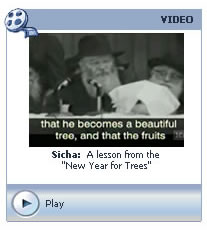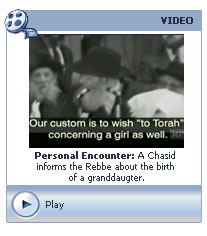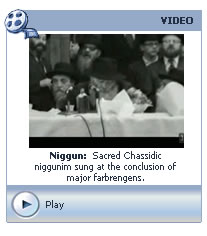A common way of regarding the calendar is as an expanse of 300-plus ordinary days "dotted" with festivals and dates of special import. To make this sea of days more managable -- and the special days easier to locate -- we chop up the year into twelve segments, calling each a "month."
The Chassidic masters offer a different perspective. As they see it, the twelve months are twelve faces of the year, and the special dates in each month are simply intensifications of the month's quality. Seen this way, the festivals of the Jewish calendar are not islands of meaningfullness in a sea of vapid time, but expressions of the spiritual character of their respective months. The eight days of Passover represent an intensification of the quality of the month of Nissan, the month of redemption; Purim is a one-day eruption of the unbridled joy that characterizes the month of Adar; the awe of Rosh HaShanah and Yom Kippur and the joy and unity experienced on Sukkot are expressions of various elements in the "coronation" of G-d as king of the universe, which is the theme of the month of Tishrei; and so on.
In other words, the twelve months of the calendar are twelve time-qualities which flow into each other, each with its unique personality and character. The festivals are the peaks and plateaus of these time-qualities -- points at which a particular month’s properties achieve a greater intensity and emphasis.
The Link
The last Shabbat of each month -- which can be any day from 23rd of the month to the 29th -- is Shabbat Mevarchim HaChodesh, "the Shabbat that blesses the month." On this Shabbat, a special prayer is recited which names the coming month, identifies the day (or days) of its Rosh Chodesh ("head of the month") and beseeches G-d to "renew it... for life and for peace, for gladness and for joy, for deliverance and for consolation." According to Chassidic teaching, the "blessing of the month" evokes the flow of sustenance and spiritual energy for the coming month.
Thus, the closing days of each month are a unique phenomenon -- a juncture in the terrain of time in which two time-qualities overlap. For example, a certain Shabbat may be the 25th of Av. As such, it is an integral part of the month of Av, a time-segment whose quality is "mourning and consolation": mourning over the destruction of the Holy Temple and the breakdown in our relationship with G-d that this represents, and consolation in the potential for renewal that lies in every regression. At the same time, it is also the Shabbat that "blesses" and calls forth the qualities of the coming month of Elul -- a month characterized by divine compassion and intimacy with G-d.
The same is true of every Shabbat Mevarchim: rooted in one month and time-quality, it evokes the time-quality of the following month, stimulating the flow of spiritual energy that saturates the next of the twelve time-segments to comprise our calendar.
The Lesson
Therein lies a lesson in how we are to experience and utilize the various time periods of our lives.
Often, we reach a point in our lives at which we are inspired to "turn over a new leaf": to reassess our past, and readjust, or even radically transform, our prior vision and approach to life. All too often, this is accompanied with a "break" from the past, a disavowal of all prior achievement. It is as if all we have done up to this point must be eradicated to give way to our "new" self.
But as the monthly Shabbat Mevarchim teaches us, different and even antithetical qualities of time form a chain in which each link is an outgrowth of its predecessor. Yes, a new year, month, week, day, hour or moment must always provoke us to a new understanding, a new feeling, a new achievement: the very fact that we have passed from one time-frame to another means that we must exploit the new potential implicit in this new environment. At the same time, however, we must appreciate how each new moment is "blessed" by the moment before, which nourishes and enriches its very different neighbor with its own qualities and achievements.
Tehillim - Psalms






0 Comments:
Post a Comment
<< Home